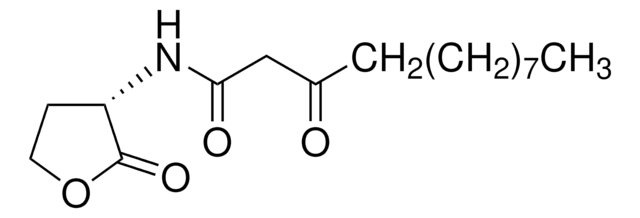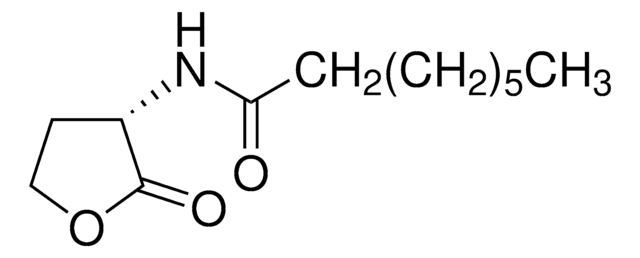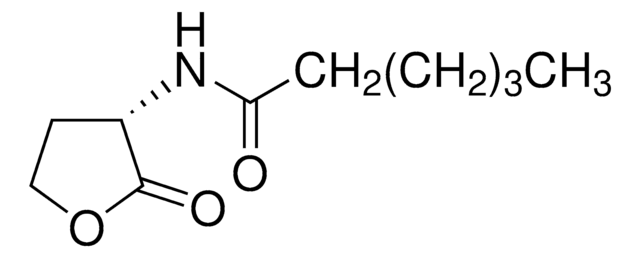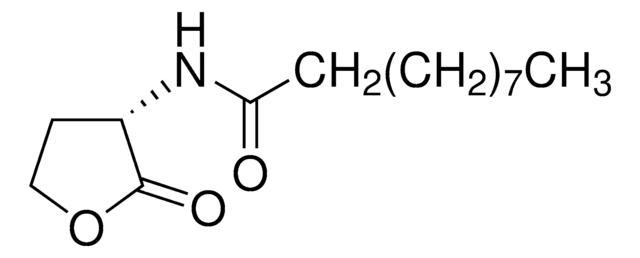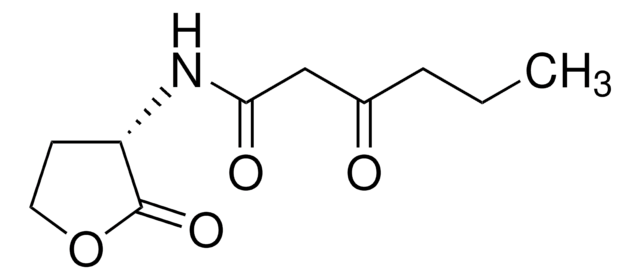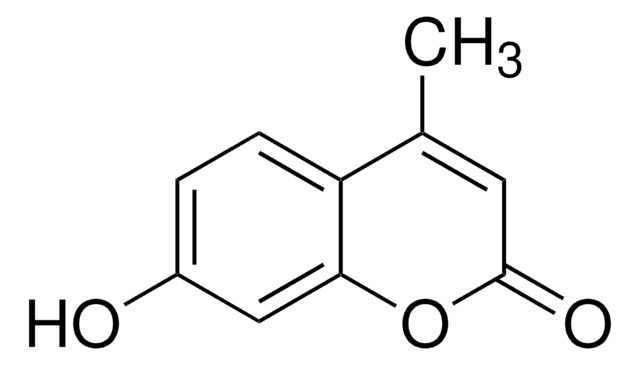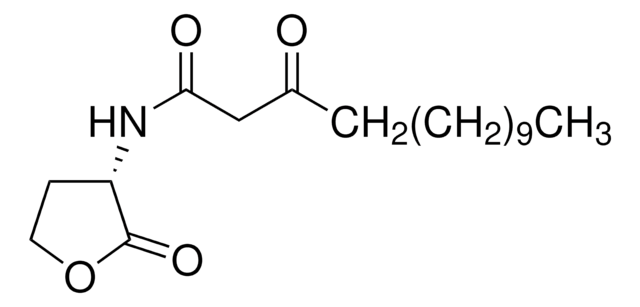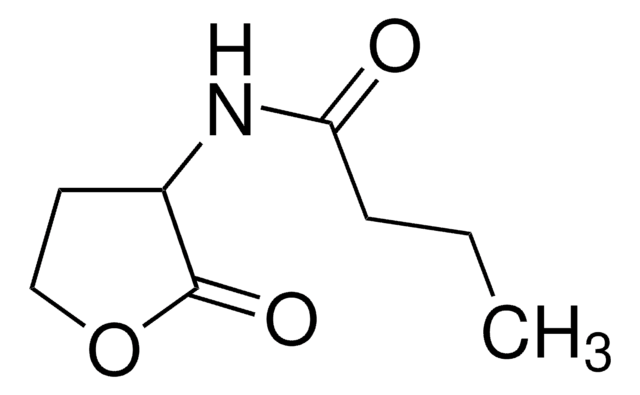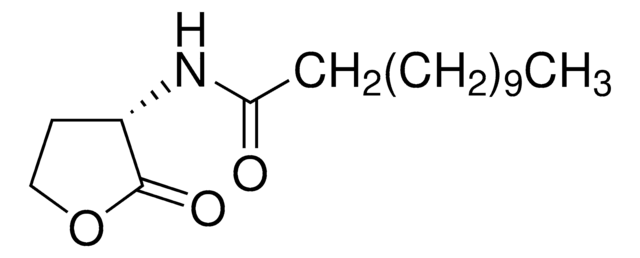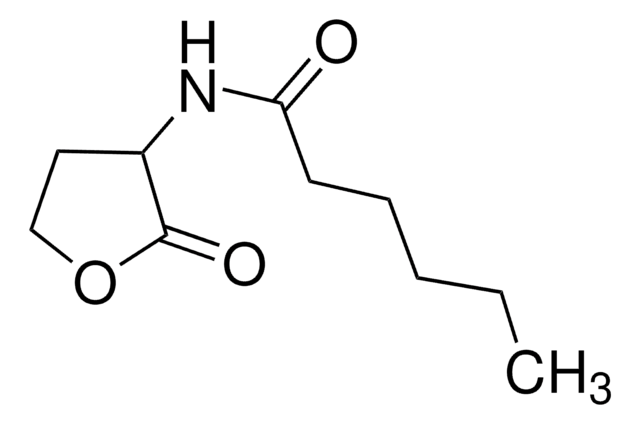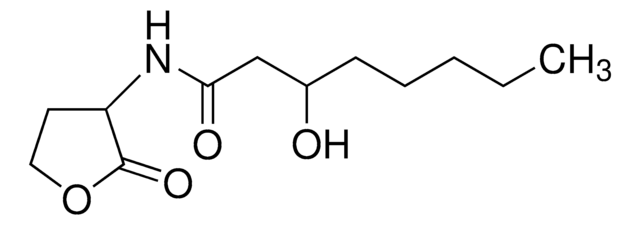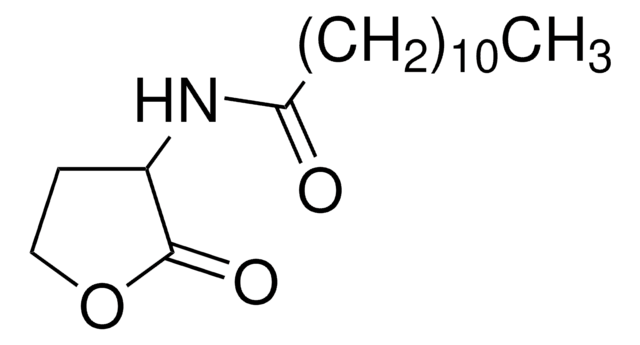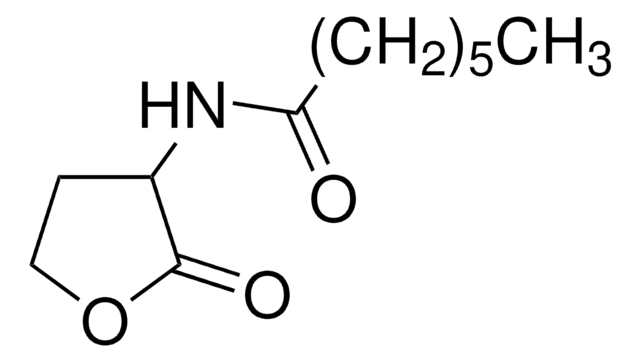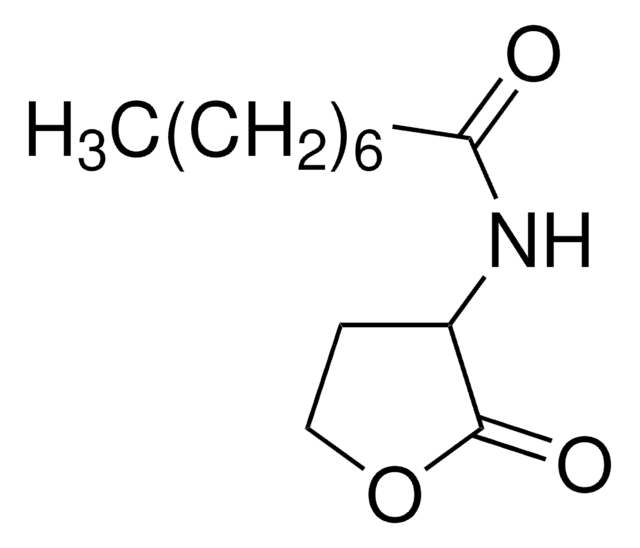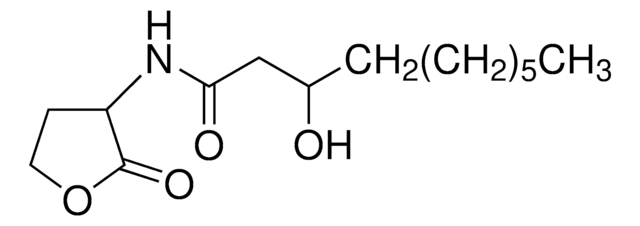O1764
N-(3-Oxooctanoyl)-L-homoserine lactone
≥97% (HPLC), white, powder
Synonyme(s) :
3-oxo-C8-HSL, 3OC8-HSL, N-(β-Ketooctanoyl)-L-homoserine
About This Item
Produits recommandés
Niveau de qualité
Essai
≥97% (HPLC)
Forme
powder
Poids mol.
241.28
Technique(s)
protein expression: suitable
Couleur
white
Solubilité
chloroform: 50 mg/mL, clear, colorless
Conditions d'expédition
wet ice
Température de stockage
−20°C
Chaîne SMILES
CCCCCC(=O)CC(=O)N[C@H]1CCOC1=O
InChI
1S/C12H19NO4/c1-2-3-4-5-9(14)8-11(15)13-10-6-7-17-12(10)16/h10H,2-8H2,1H3,(H,13,15)/t10-/m0/s1
Clé InChI
FXCMGCFNLNFLSH-JTQLQIEISA-N
Description générale
It is a signaling molecule that is produced by Gram negative bacteria.
Application
- to study the effects of pH, temperature, and salinity on extracellular polymeric substances (EPS) of Pseudomonas aeruginosa biofilm.
- as an AHL inducer to activate the quorum sensing pathways in Synechococcus elongatus.
Actions biochimiques/physiologiques
Souvent commandé avec ce produit
Code de la classe de stockage
11 - Combustible Solids
Classe de danger pour l'eau (WGK)
WGK 3
Point d'éclair (°F)
Not applicable
Point d'éclair (°C)
Not applicable
Équipement de protection individuelle
Eyeshields, Gloves, type N95 (US)
Faites votre choix parmi les versions les plus récentes :
Déjà en possession de ce produit ?
Retrouvez la documentation relative aux produits que vous avez récemment achetés dans la Bibliothèque de documents.
Les clients ont également consulté
Substances of Pseudomonasaeruginosa Biofilm with
N-(3-Oxooxtanoyl)-L-Homoserine Lactone Addition
Notre équipe de scientifiques dispose d'une expérience dans tous les secteurs de la recherche, notamment en sciences de la vie, science des matériaux, synthèse chimique, chromatographie, analyse et dans de nombreux autres domaines..
Contacter notre Service technique